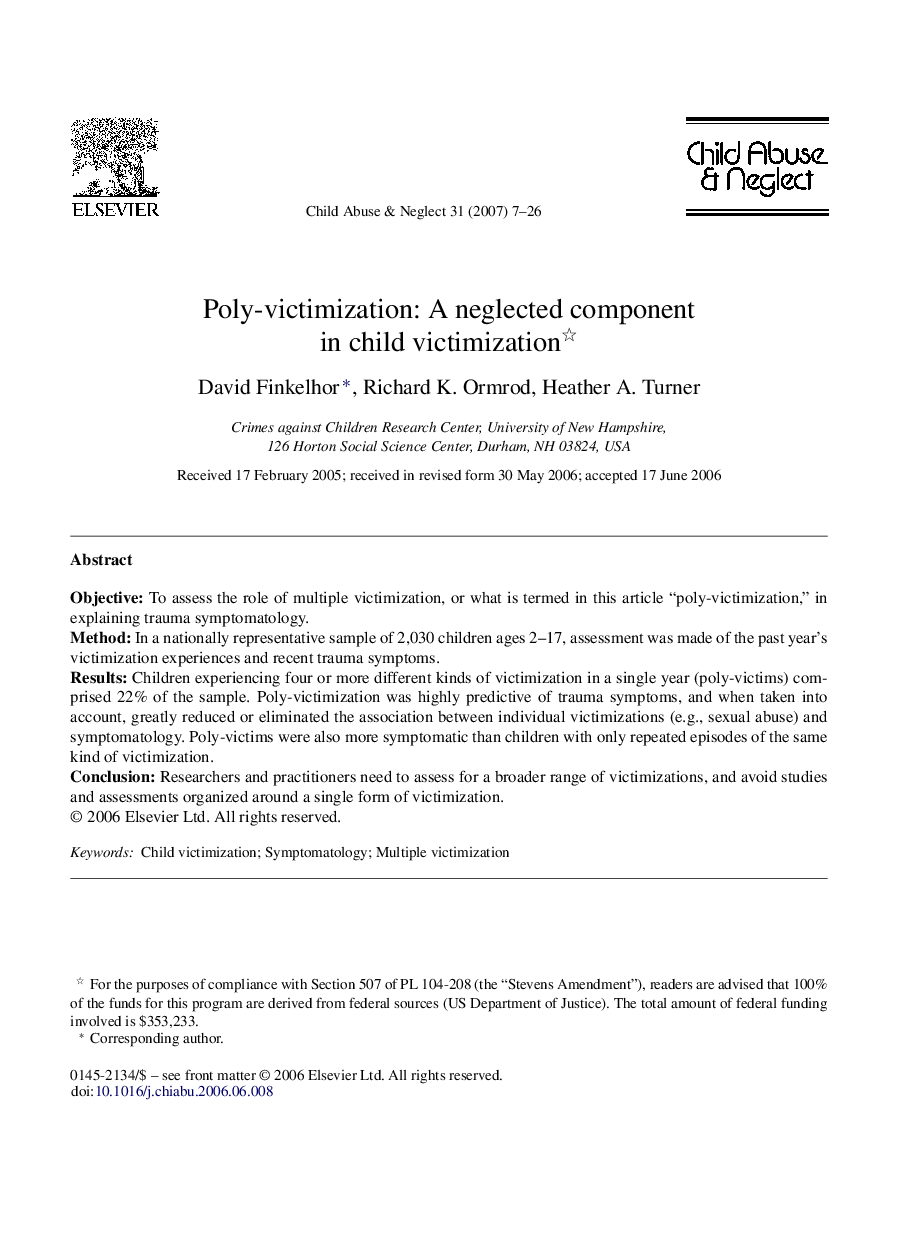| کد مقاله | کد نشریه | سال انتشار | مقاله انگلیسی | نسخه تمام متن |
|---|---|---|---|---|
| 345613 | 617536 | 2007 | 20 صفحه PDF | دانلود رایگان |

ObjectiveTo assess the role of multiple victimization, or what is termed in this article “poly-victimization,” in explaining trauma symptomatology.MethodIn a nationally representative sample of 2,030 children ages 2–17, assessment was made of the past year's victimization experiences and recent trauma symptoms.ResultsChildren experiencing four or more different kinds of victimization in a single year (poly-victims) comprised 22% of the sample. Poly-victimization was highly predictive of trauma symptoms, and when taken into account, greatly reduced or eliminated the association between individual victimizations (e.g., sexual abuse) and symptomatology. Poly-victims were also more symptomatic than children with only repeated episodes of the same kind of victimization.ConclusionResearchers and practitioners need to assess for a broader range of victimizations, and avoid studies and assessments organized around a single form of victimization.
Résumé/ResumenFrench- and Spanish-language abstracts not available at time of publication.
Journal: Child Abuse & Neglect - Volume 31, Issue 1, January 2007, Pages 7–26